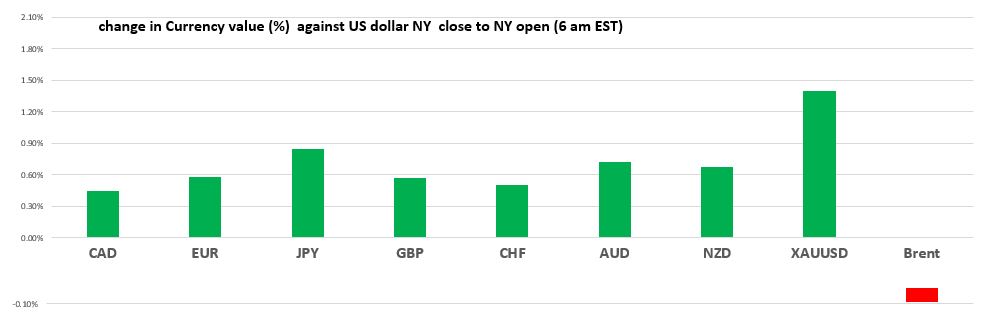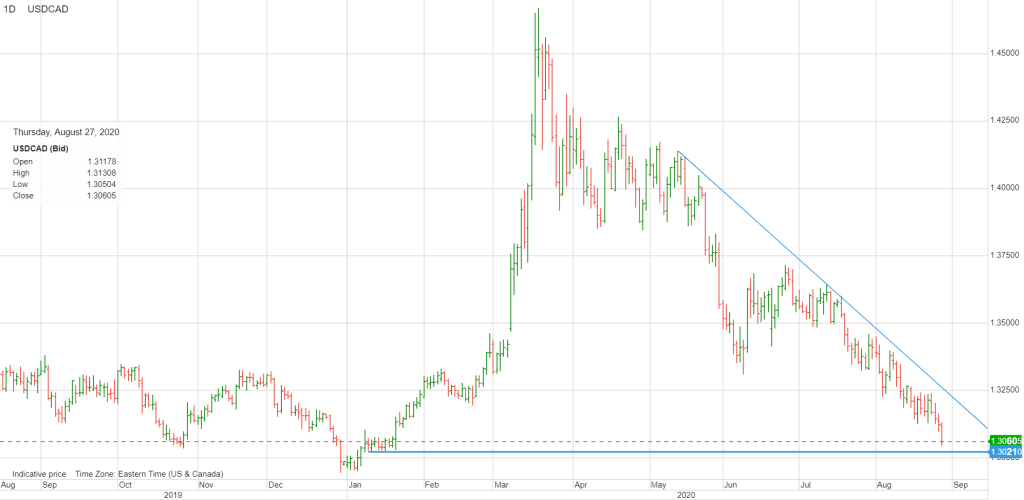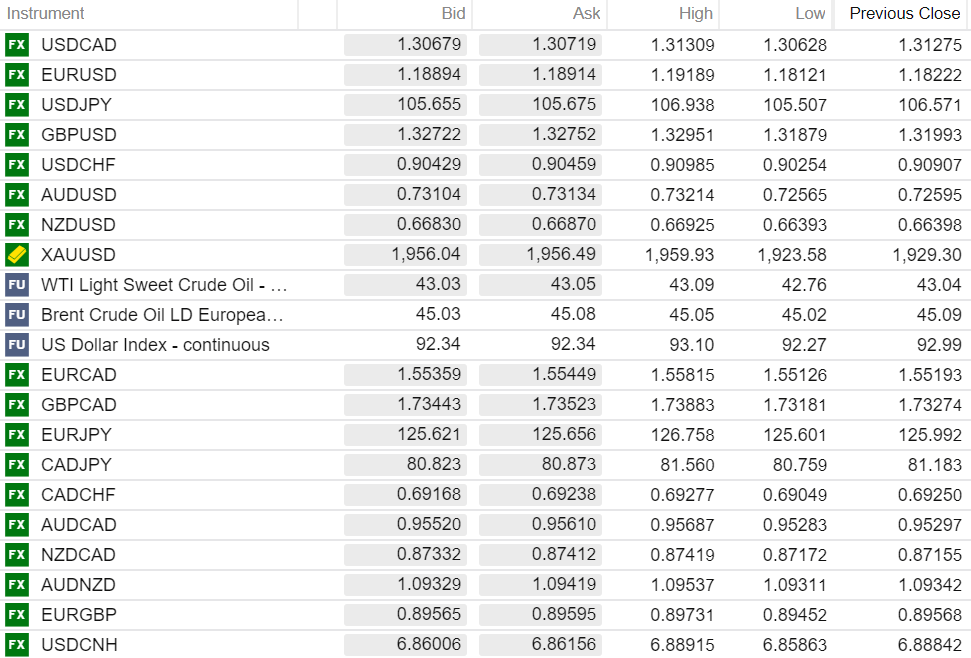
Photo: Pixabay/IFXA
USDCAD Open (6:00 am) 1.3068-72, Overnight Range 1.3063-1.3131
- Powell puts match to the US dollar
- Canada GDP beats forecasts-no one cares
- US dollar opens with losses across the board, but above its worst levels.

Source: Saxo Bank/IFXA Ltd
US Personal income and spending data beat forecasts as did Wholesale Inventories. The news was overshadowed by Powell’s comments, yesterday.
Fed Chair Jerome Powell announced that the Fed would scrap its 2.0% inflation goal and replace it with an Average Inflation Target rate of 2.0%. In layman’s terms it means “we can’t hit the bullseye, so just hitting anywhere on the dart board is okay.” According to the Fed “following periods when inflation has been running below 2 percent, appropriate monetary policy will likely aim to achieve inflation moderately above 2 percent for some time.” That decision won’t be based on a mathematical formula that defines average, which gives policymakers a lot of flexibility.
The Phillips curve is out, and the Powell parabola is in.

Chart: Powell Parabola
Asia equity markets closed on a mixed note despite China’s shanghai Shenzhen 300 index climbing 2.39%. European stock market indexes are trading lower on the back of somewhat disappointing German and Euro area Consumer confidence reports. Broad US dollar weakness and the thoughts of low US rates for a long, long time lifted gold prices. Oil prices were steady.
Do the overnight FX moves signal a new downtrend for the US dollar?
Maybe-Maybe not. The US dollar index (USDX) hasn’t confirmed a new slide as it is still above the 92.10 double bottom (daily chart) Furthermore, the US dollar slide is occurring at month-end.
The UK is closed on August 31 for a Bank holiday, suggesting portfolio rebalancing flows for rebalancing purposes are being executed today. The S&P’s 6.0% gain in August suggests the managers need to sell US dollars against GBP and CAD. USDCAD fell 0.44% and GBPUSD climbed 0.57% overnight.
EURUSD climbed in Asia and peaked in Europe at 1.1919. News German Consumer Confidence fell 1.8% (forecast 1.2%) knocked the single currency to 1.1890 at the New York open. Prices since bounced to 1.1903. EURUSD is struggling to rally in part because the market is already very long.
GBPUSD surged, rising from 1.3188 to 1.3295 with month-end GBP demand playing a role. Prices are also supported by broad US dollar weakness, while “no-deal Brexit” risks are ignored. Traders will be looking ahead to BoE Governor Bailey’s speech this morning.
USDJPY dropped following Prime Minister Abe’s resignation announcement. He said it was for health reasons, but plans to hang around until his successor is chosen. USDJPY plunged from 106.94 to 105.38 in NY alongside broad US dollar weakness following Powell’s comments.
AUDUSD and NZDUSD rallied. In addition to the bearish US dollar sentiment, AUDUSD got an added lift from signs the coronavirus outbreak was slowing, and from month-end demand.
USDCAD joined the greenback-dumping party, with losses fueled by portfolio managers needing Canadian dollars for month-end. It is hard to believe that USDCAD losses will be sustained. Canadian interest rates are not going anywhere soon, and certainly not higher. AUDUSD and NZDUSD outperformed USDCAD this week, but a wide margin. AUD gained 1.73%, and NZDUSD rose 2.16%, compared to USDCAD falling 0.64%.
That suggests global investors view Canada as a worse risk than the antipodean currencies. The Canadian economy looks vulnerable. The energy industry is decimated thanks to the steep drop in crude prices, a lack of distribution capability, and anti-oil federal government policies. The US appears to have put the USMCA agreement on trade into the White House outhouse.
They have slapped tariffs on aluminum and are threatening tariffs on softwood lumber. The Federal budget deficit is north of $350 billion, and the Finance Minister is a Russian History major.
Today’s US data includes Michigan Consumer Confidence (forecast 72.8) and Chicago PMI (forecast 52)
USDCAD Technicals: The intraday USDCAD technicals are bearish below 1.3130, looking for a break of support in the 1.3000-30 zone to test 1.2950. A break below targets 1.2730. A break above 1.3130 will lead to 1.3230 but only a break above the latter level will negate the downtrend. For today, USDCAD support is at 1.3030 and 1.2990. Resistance is at 1.3105 and 1.3130. Today’s Range 1.2990-1.3080
Chart: USDCAD daily

Source: Saxo Bank
FX open (6:00 am EDT) High, Low, and previous close

Source: Saxo Bank





